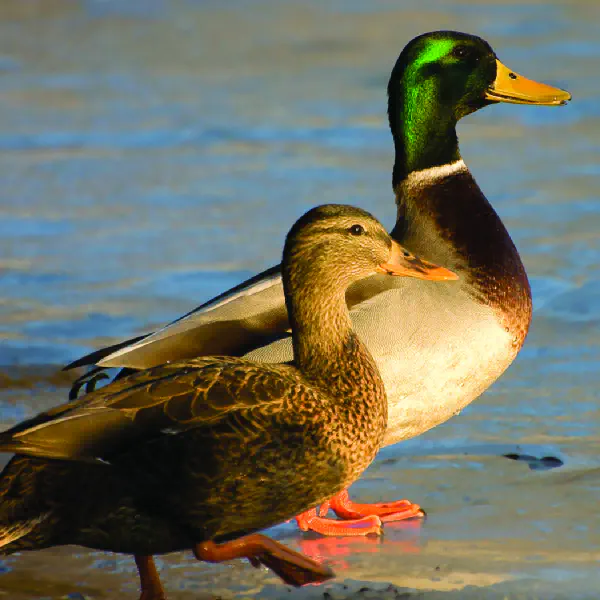Anas platyrhynchos
Table of Contents

Scientific Classification
| Kingdom: Animalia |
| Phylum: Chordata |
| Class: Aves |
| Order: Anseriformes |
| Family: Anatidae |
| Genus: Anas |
| Species: Anas platyrhynchos |
Conservation Status
Identifying Features
Mallards are an easily recognizable waterfowl, with males having grayish brown bodies, a white ring around their neck, and green iridescent heads. Mallards are sexually dimorphic and females are brown and tan with darker stripes on their heads. Both sexes have iridescent blue speculums. Their wingspans can reach almost 3 feet long and their bodies are about 2 feet in legth.
Habitat & Range
Mallards can be found across most of the Northern hemisphere as well as parts of Asia, Africa, South America, and Oceana. They prefer living in wetland with plenty of vegetation to host aquatic invertebrates.
Behavior
Mallards are the most plentiful species of waterfowl in the world, and they have adapted well to living among humans. Their diet consists of aquatic vegetation and invertebrates but they often will consume grains from croplands.
Depending on the climate and resources available in their home habitat, mallards may or may not migrate southward for the winter.
Life Cycle
Courtship for mallards can begin as early as October and last into March. Males leave after mating, and females lay 9-13 eggs in a ground nests close to water. Ducklings take about a month to hatch and become fully mature in a year. Though female yearlings will breed, they tend to have higher hatchling mortality rates than more experienced mothers.
Featured image by Eric Baetscher

